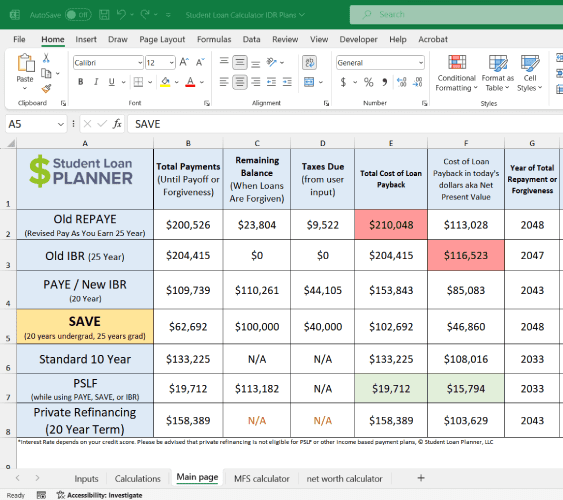
Aidvantage is the federal loan servicing unit of Maximus Education. In December 2021, it began servicing loans owned by the U.S. Department of Education that were previously serviced by Navient. This change was due to Navient’s departure as a loan servicing business, specifically for Direct Loans and government-owned Federal Family Education Loan Program (FFELP) Loans.
In previous Student Loan Planner reader surveys, Navient was one of the least-liked federal student loan servicers — so many student loan borrowers who had a subpar experience with Navient were ready for a change.
We surveyed over 3,900 of readers in January 2024 and found that Aidvantage received the second highest reader rating. But we're still seeing many of the same complaints as other loan servicers, such as long wait times, inconsistent information and inaccurate monthly payments. Yet, many readers have had a good experience with Aidvantage thus far.
Here’s what to know Aidvantage student loans.
1. Subsidiary of Maximus Education
Aidvantage is a subsidiary of Maximus Education — which manages defaulted student loans and doesn't do a great job at it.
“It’s very clear that not a whole lot is probably going to change with the quality of the servicing you receive, regardless of what the Department of Education officials say.”
Student Loan Planner CEO Travis Hornsby
Travis goes on to note that borrowers who are in default often receive poor guidance from servicers about their options. In fact, Maximus faced a civil lawsuit in February 2020 claiming illegal collection practices.
Get Started With Our New IDR Calculator

2. Be on the lookout for correspondence
If your account was transferred to Aidvantage, you should have received a welcome letter with the information you need to access your online account and contact information to discuss your loans going forward.
Keep in mind, nothing will change with your actual loan as a result of the switch. You’ll just be communicating with Aidvantage as your new loan servicer. This means you’ll log into a different website and contact a different customer service team.
3. Your account number (and more) stays the same
When your loan(s) is transferred, here's what doesn't change:
- Your account number
- The terms of your loan — this includes the interest rate, length and any benefits that are associated with it
- The customer service number. Even though the website you’ll login to will change, apparently the number you’ll call for customer support will stay the same
- Your user ID and password
4. Educational materials from Aidvantage
Aidvantage has improved its website since the original Navient transition, which initially only provided bare-bones information regurgitated from StudentAid.gov. But it appears to be more user-friendly than it was, which should help as borrowers gear up for repayment.
That said, some of our readers feel Aidvantage has some serious kinks to work through.
“The Aidvantage website is so clunky, and I feel like I just click in circles and never get to go anywhere.”
January 2024 Student Loan Planner Reader Survey
Student loan borrowers appreciate the level of attention and guidance they receive from private student loan companies, but it doesn’t appear that Aidvantage has reached that level of customer service.
“Aidvantage representatives don’t know how to guide thru their own website. For example, it took a while for someone to be able to show me where it says my current repayment plan, they had to place me on hold. They give wrong information. For example, one person said I only have 10 years to pay my loans before forgiveness when I have 20 more years. Every time I call, I get differing answers which is insane when my loans are over $300,000 and they can’t provide me with the correct info.”
January 2024 Student Loan Planner Reader Survey
If you need help understanding your repayment strategies, it might be best to talk to a professional student loan consultant.
5. Changing your interest rate (TL;DR, you can’t)
Even though your loans were previously serviced by Navient and then transferred to Aidvantage, this isn’t an opportunity to bargain for different repayment terms or lower interest rates. This switch isn’t similar to student loan refinancing or consolidating your student loan debt where your terms and interest rate might be eligible for modification.
The interest rate for your federal student loans is determined by Congress, not Aidvantage — the servicer has no authority to change your interest rate.
6. Aidvantage didn't take over all Navient student loans
If you have FFELP loans that aren’t serviced by the Department of Education, or if you have private loans that are serviced by Navient, these will remain under Navient’s purview. This means you could potentially have two student loan servicers, if you originally had a mix of student loan types with Navient.
You’ll then have to login to two separate websites, call two separate customer service centers, have two separate monthly student loan payments, and so on. Also, when you enroll in a repayment plan with one servicer, it won’t impact your loans through the other servicer.
This will likely only impact a small percentage of borrowers who have FFELP or private loans with Navient and additional loans that are part of the Aidvantage transition.
7. Sending checks to repay your student loans
If you’re sending checks to repay your student loans, you can continue sending them to the same address. However, ensure it’s addressed to “Aidvantage” instead of “Navient”. Make this change once Aidvantage has officially reached out to you as your servicer — again, you’ll receive a welcome letter in the mail when this occurs.
Last thing to know about Aidvantage
The biggest thing to remember about the switch between loan servicers, Navient to Aidvantage, is that there likely isn’t going to be a massive change in process.
If you have a student loan repayment strategy you’re happy with, you probably won't have issues with transitioning to Aidvantage. You'll mainly need to verify your online account access through Aidvantage’s new website.
Otherwise, this could be a good time to re-evaluate your repayment strategy to ensure you're maximizing student loan forgiveness or other repayment goals. Learn more about other repayment plan options.
Refinance student loans, get a bonus in 2024
| Lender Name | Lender | Offer | Learn more |
|---|---|---|---|

|
$500 Bonus
*Includes optional 0.25% Auto Pay discount. For 100k or more.
|
Fixed 5.24 - 9.99% APR*
Variable 6.24 - 9.99% APR*
|
|

|
$1,000 Bonus
For 100k or more. $300 for 50k to $99,999
|
Fixed 5.19 - 10.24% APPR
Variable 5.28 - 10.24% APR
|
|

|
$1,000 Bonus
For 100k or more. $200 for 50k to $99,999
|
Fixed 5.19 - 9.74% APR
Variable 5.99 - 9.74% APR
|
|

|
$1,050 Bonus
For 100k+, $300 for 50k to 99k.
|
Fixed 5.44 - 9.75% APR
Variable 5.49 - 9.95% APR
|
|

|
$1,275 Bonus
For 150k+, $300 to $575 for 50k to 149k.
|
Fixed 5.48 - 8.69% APR
Variable 5.28 - 8.99% APR
|
|

|
$1,250 Bonus
For 100k+, $350 for 50k to 100k. $100 for 5k to 50k
|
Fixed 5.48 - 10.98% APR
Variable 5.28 - 12.41% AR
|
Not sure what to do with your student loans?
Take our 11 question quiz to get a personalized recommendation for 2024 on whether you should pursue PSLF, Biden’s New IDR plan, or refinancing (including the one lender we think could give you the best rate).
